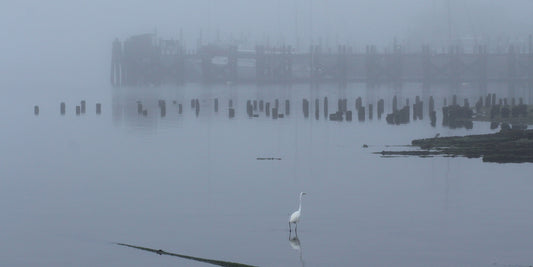Chandra Prasad knows how to start a story: with a plane crash and a glass eye.
Prasad (pictured above), a novelist who lives in North Haven, is the author of several books for adults, both fiction and non-fiction, and the editor of an anthology of short stories. With the March 27 release of her newest book, Damselfly, she’s stepping into the young adult market.
From the first pages of Damselfly, readers may experience a jolt of recognition. Prasad’s tale is a reboot of William Golding’s classic Lord of the Flies, in which a group of boys are stranded on a deserted island by a plane crash. Left to recreate their own society without adult guidance, they splinter and turn against one another. From the time her 8th-grade English teacher introduced the novel as the “perfect microcosm” of human society, Prasad says, she wondered: How would the story be different with girls at its center?
There are numerous echoes of Golding’s novel in Prasad’s—the separation of kids into dueling groups, an unknown and fearful presence on the supposedly deserted island, the trumpeting of a conch shell. But it’s best to read Damselfly on its own merits rather than through the lens of a 64-year-old novel that, in many ways, belongs to a different time and place.
Damselfly’s first-person narrator is an Indian-American girl named Sam (not Sampatti or Samiksha or Samaah, as a classmate’s father expects, but Samantha), who comes from a secretly troubled home. Her best friend, Mel Sharpe, “an original, a person utterly and remarkably herself,” is the brilliant daughter of a botanist and a naturalist-adventurer and therefore the most equipped to survive in the wild. The girls and their classmates are members of a prep school fencing team whose private plane has crashed on the way to a tournament, killing the pilot and two boys. But others survive—10 boys and girls in all—including rich, beautiful, conceited Rittika and her twin brother Rish. Sam’s alliances are sometimes torn between Mel, whom she admires and trusts, and Rittika, who flatters her by including her among the “Golds” as opposed to the “Pales.” Thus, race enters into the complicated equation of who will ally with whom.
Perhaps most interesting of all the characters is Anne Marie, who before long is singled out as a scapegoat. She has run out of medication needed to treat an unnamed mental health problem, and she tells Sam, “The world, like, loses its structure.” Becoming “attuned to an imminent danger only she could sense,” Anne Marie retreats to the jungle, where she builds herself a feathered nest and sits for hours. Sam has compassion for Anne Marie when many of the others do not, partly because of her own sister’s similar struggles back home.
Drawing mental illness into the story is just one way in which Prasad has crafted a 21st-century response to eternal questions about the human condition. “Mental health is a long-neglected part of health care in this country,” she says. “We know that especially for teens, anxiety and depression issues have really grown. . . For me, it was a very natural thing to include.”
That attention to issues of particular importance to teens helps to explain why a move into “young adult” fiction was a natural one for Prasad. Her earlier novels for adults always had a “crossover” teen audience, she says. “Now, basically, I’m writing a young adult novel for older teens that has adult crossover.” It doesn’t hurt that the so-called YA market has “exploded” in recent years. From a business perspective, shifting her writerly focus to teenage readers makes perfect sense. “It’s a matter of survival, if you want to be in the business,” Prasad says. “If you don’t keep a finger on the pulse of what is up and coming and what publishers want, then you’re not going to succeed.” She hopes that middle school and high school teachers will connect with the novel as well and bring it into their discussions of Lord of the Flies as a companion piece, perhaps one that answers the question Prasad first asked as an 8th-grader.
Her novel’s title gives a nod to Golding’s—one with a female reference built right in. The damselflies of Prasad’s book are like dragonflies but “thinner, more delicate-looking. Pretty predators, I guess you could say,” Mel explains to Sam. “They’re amazing hunters. See the way they’re hovering right now? They’re waiting to strike.”
The image, of course, refers not just to the flies lingering above the surface of what the stranded teens have named Conch Lake, but also to Rittika and her followers. Just how they will strike and with what consequences is up to the reader to discover.
Damselfly by Chandra Prasad
Where to Buy: RJ Julia | Amazon | Barnes & Noble
Author Readings: May 7, 7pm, at Barnes & Noble (North Haven); May 15, 7pm, at RJ Julia (Madison)
Written by Kathy Leonard Czepiel. Photographed by Dan Mims. Image depicts Chandra Prasad inside Yale’s Sterling Memorial Library.







